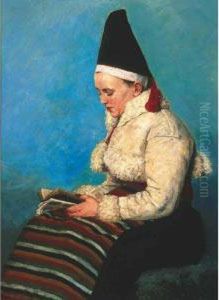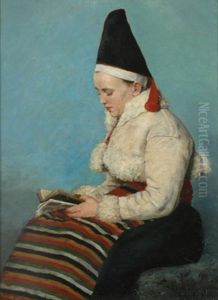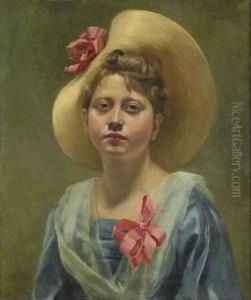Eliza Olivecrona Paintings
Eliza Olivecrona, born Eliza Rosalie Tjäder in 1868, was a Swedish artist known for her painting and textile work. Eliza was born into an era when opportunities for women in the arts were beginning to expand, though they were still limited compared to their male counterparts. Throughout her life, Olivecrona contributed to the Swedish art scene, particularly through her embroidery and tapestry work.
In her early years, Eliza Olivecrona received a traditional education for women of her social standing, which included a strong emphasis on the arts and crafts. Recognizing her talent, her family supported her artistic education. She honed her skills in various mediums but was particularly drawn to textiles, an art form that was considered more acceptable for women at the time.
Olivecrona's work was often characterized by intricate detail and a rich use of color. She was inspired by the natural world, Swedish folklore, and the Arts and Crafts movement, which emphasized traditional craftsmanship and the importance of beauty in everyday objects. Her tapestries and embroideries often featured floral patterns and natural motifs, as well as scenes from Swedish legends and fairy tales.
Eliza Olivecrona's contribution to Swedish art was not just through her own creations but also through her advocacy for the arts and her role as an educator. She believed strongly in the power of art to enrich lives and was committed to the promotion of women's artistic education. Olivecrona's work was exhibited in various venues, contributing to the acknowledgment and appreciation of textile art as a significant form of artistic expression.
Olivecrona passed away in 1943, leaving behind a legacy of artistic works that continue to be appreciated for their craftsmanship and aesthetic value. Her life's work played a part in the broader movement of elevating the status of textile arts and opening up more avenues for women in the field of art.



